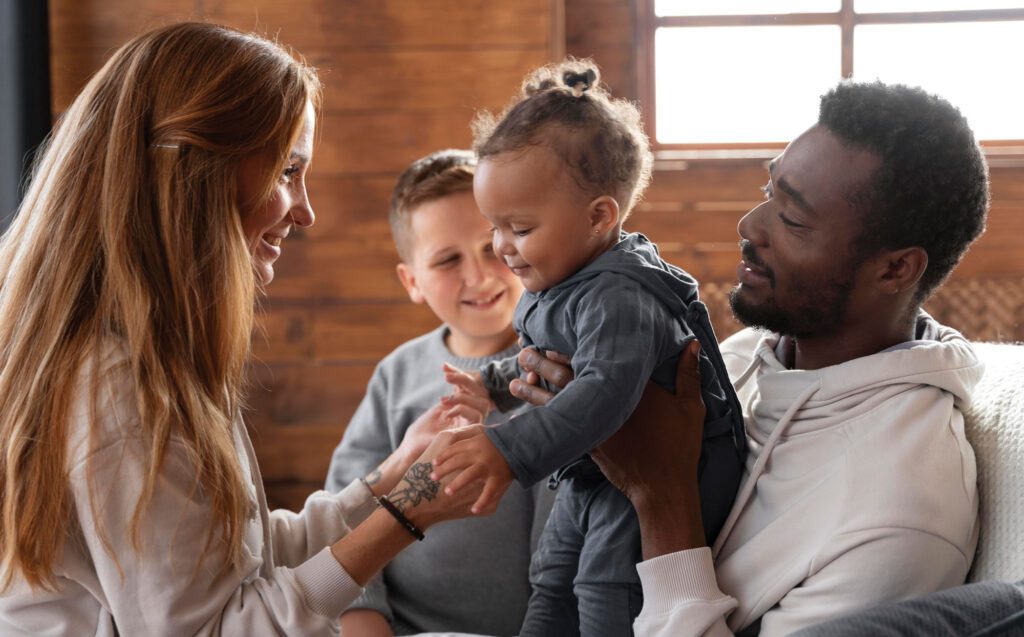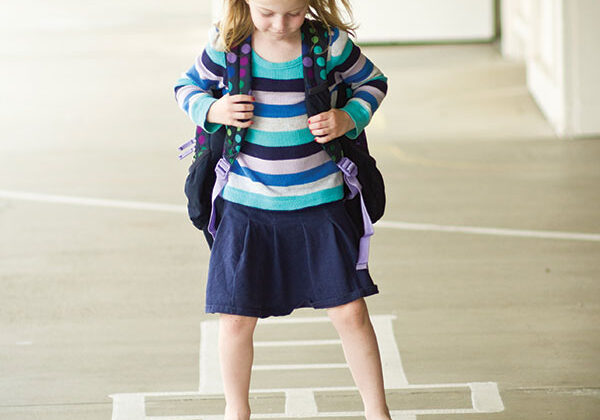“Secrets are detrimental,” says Sheri Wiggins, program director of Shasta College Foster & Kinship Care Education Program. “In our society we don’t talk about things that are shameful, We don’t want adoption to ever be hidden or not discussed. Discussing adoption in an age-appropriate manner with children can lead them to perceive it as a normal way to build a family.”
Each age group has a unique perspective on adoption
Navigating conversations about adoption with children requires sensitivity, age-appropriate information and an understanding of their developmental stages. Each age group comes with unique perspectives and questions.
“Children who are adopted need to know their entire story before they are grown and before they hit full adolescence, when their story would be interpreted through an emotional and often irrational brain,” says Sheri. “Pre-adolescents can understand the concepts but aren’t at the stage where they are dramatic yet. If one waits to tell a child their story when they are grown, frequently the child is angry at having their history kept from them and wonders what else the parent knows that they are not sharing. This has the potential to be disastrous. Start talking to your child about adoption immediately, even if they are infants. Understanding will grow but the vocabulary will already be there.”
Whether you are talking about adoption within your own family or helping children understand adoption in general, these ideas will help. The following guide provides insights and tips for helping children understand adoption at different stages of their growth.

Infants and Toddlers (0-2 years)
At this age, children do not grasp complex concepts about family structure. They simply understand what family looks like from their own experiences. It’s essential to create a loving and nurturing environment from the start to promote healthy relationships and development.
- Establish a Secure Attachment: Focus on building a strong bond between the child and adoptive parents. Consistent care and affection create a foundation of trust.
- Use Simple Language: Introduce adoption-related terms like “forever family” or “adopted” in a natural and positive context. For example, during story time include books that celebrate diverse families.
Preschoolers (3-5 years)
Preschoolers are curious and often ask questions about their origins or that of others. Sometimes these questions can seem blunt or inappropriate. Giving them appropriate language is important. It is also helpful to avoid extreme reactions to things they say or ask. Instead, be proactive about sharing information and correct gently to ensure respectful conversations.
- Introduce Basic Concepts of Family: Begin by explaining that families come in all shapes and sizes. Emphasize that love and care are what define a family.
- Utilize Age-Appropriate Books and Media: Select books, TV shows or movies that depict adoption positively. These can serve as conversation starters and help children relate to adoption in a comfortable manner.
Early Elementary (6-8 years)
This is the time when children start to grasp more complex ideas about family dynamics. As you help them understand adoption and family in general, consider how to provide information that is easy to understand.
- Provide Clear, Honest Information: Offer age-appropriate details about adoption, addressing questions about birth parents, if applicable. Emphasize that adoption is often a loving choice made by birth parents. You can also express that sometimes the circumstances of adoption are hard to understand, but that doesn’t mean it is bad. Adoption is another way to build a family.
- Encourage Open Communication: Let the child know that they can ask questions and express their feelings about adoption without judgment. This is true whether it is about themselves or about others.
Late Elementary (9-11 years)
Pre-teens are developing a more nuanced understanding of family relationships and identity. Children may want to know about things that they are not emotionally prepared for. Try to find ways to explain things without overwhelming them with information that would be inappropriate at their age.
- Explore Identity and Heritage: Help the child explore their own identity, including their cultural heritage and how it fits into their family.
- Address Tough Questions: Be prepared for more complex questions about adoption. Provide honest answers while considering the child’s emotional readiness.
Early Adolescents (12-14 years)
Adolescence brings a deeper awareness of identity and the desire for independence. Kids in this stage may begin to demand more information, wondering if you’ve held things back. They may also ask emotionally difficult questions. Be present and supportive as you walk with them through understanding.
- Foster Independence: Encourage the adolescent’s autonomy and self-expression. Support their exploration of identity, including their feelings about adoption and family.
- Offer Emotional Support: Acknowledge any feelings they have or questions about their adoption story. Provide a safe space for them to express themselves.
Late Adolescents (15-18 years)
Teenagers may grapple with a wide range of emotions regarding their adoption. Some do this outwardly, asking lots of questions and expressing their ideas. Others may keep their thoughts in. You can seek outside support if your child has trouble expressing their thoughts and feelings.
- Encourage Self-Advocacy: Help them develop the skills to communicate about their adoption story with confidence, if they wish to do so.
- Acknowledge Their Feelings: Validate any complex emotions they may have about adoption. Offer them resources for processing these feelings.
Understanding the importance of a child’s story of adoption
“The adopted child’s history belongs to the child, the parents are only the keepers of the history,” Sheri says. And when talking to others (family, church family, co-workers, neighbors, etc), Sheri advises parents to check with their child before sharing the child’s history. Some children feel comfortable sharing their stories, others prefer to keep their story private.
Understanding adoption at different stages of a child’s development is crucial for providing the right level of information and support. By tailoring conversations and resources to each age group, you can help your child navigate the idea of adoption. Whether it’s their story or trying to understand that of someone else, you can help them process their feelings with confidence, compassion and love.
Posted in: Parenting
Comment Policy: All viewpoints are welcome, but comments should remain relevant. Personal attacks, profanity, and aggressive behavior are not allowed. No spam, advertising, or promoting of products/services. Please, only use your real name and limit the amount of links submitted in your comment.
You Might Also Like...

The First Back-To-School Journey
It’s August and back-to-school reminders are everywhere. Parents of preschoolers, this means your first back-to-school journey is about to begin. In the year before kindergarten, there are important steps you […]

The Benefits of Early Second Language Learning
As I approach the classroom to pick up my kids, I can hear children’s voices but the dialogue isn’t clear. Judging by the giggles and loud chatter I can tell […]
Learning Beyond The Books: 5 Skills Smart Kids Need
Raising smart kids isn’t about “teaching to the test,” it’s about building brainpower. Kids who can seek information, connect ideas, and apply what they’ve learned aren’t just book-smart, they are […]
Doesn’t Bug Me
I remember the afternoon when one of our girls, a toddler at the time, brought me a treasure from our yard clutched in her chubby hand. Holding her fist up to […]


